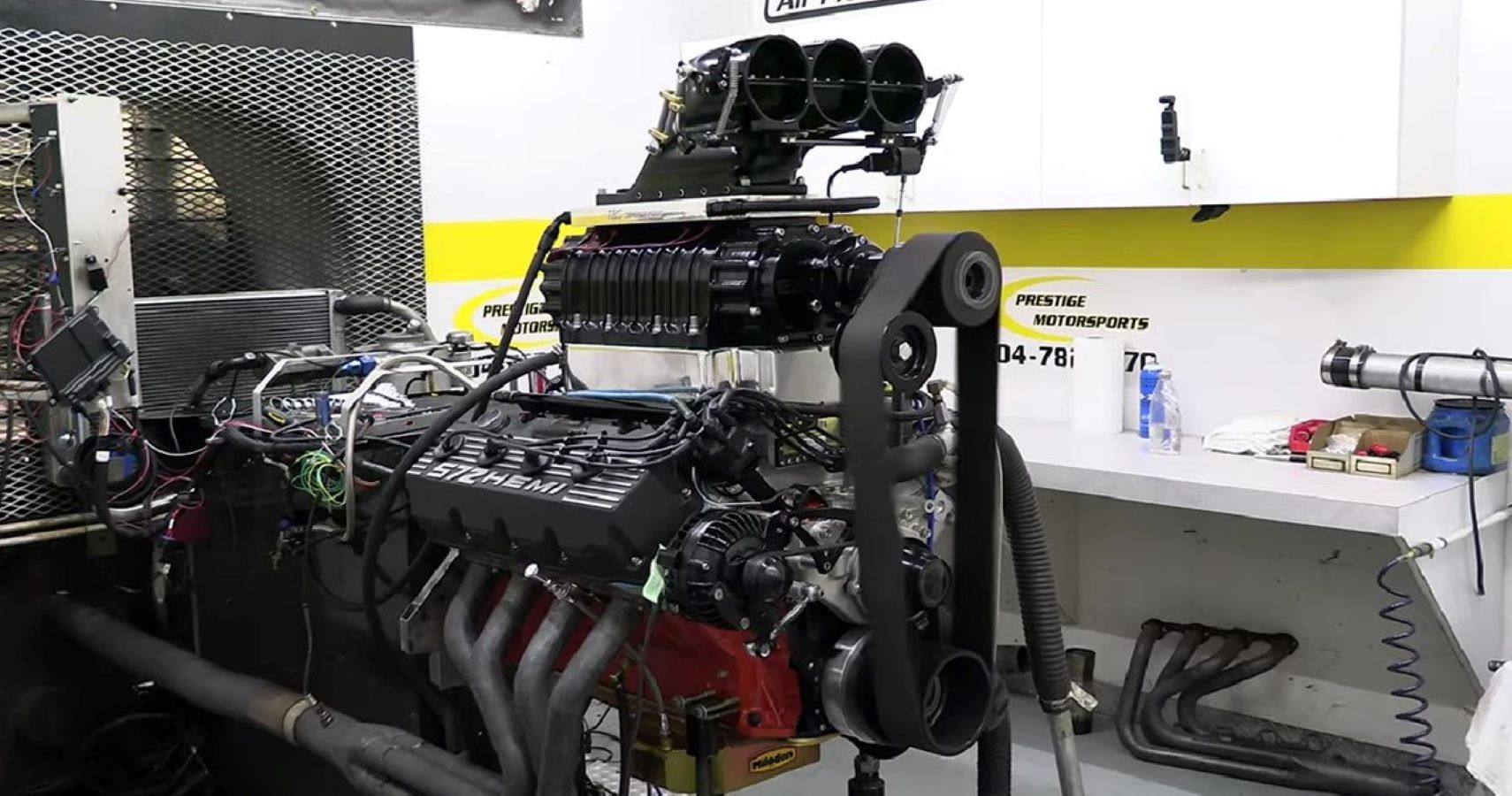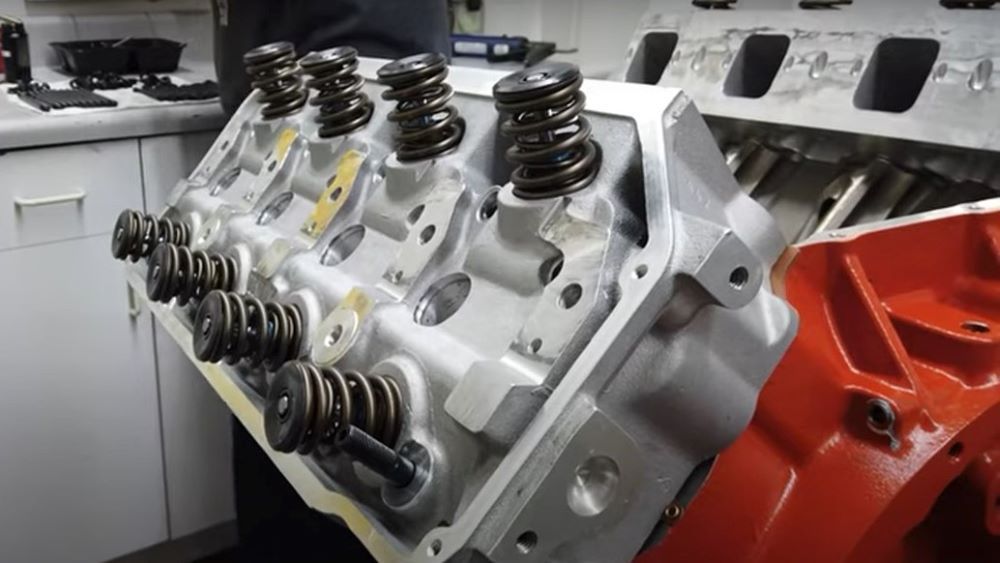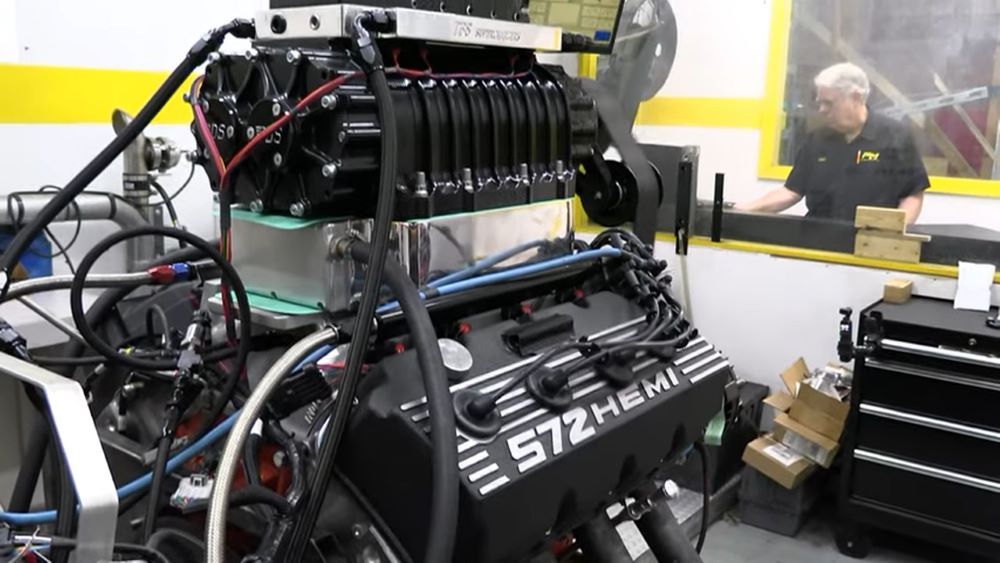As gearheads, we've spent most of our lives admiring cars with big displacement engines and larger blower assemblies sticking through their hoods. The trend is evident in everything from a wheel-standing 1970 Dodge Charger on the movie screen to our favorite Hot Wheels car. This thoroughly satisfying video from YouTube channel The Horsepower Monster takes us from the bare 426 cu-in Hemi block through each step in the assembly process, to running the blower-infused 572 cu-in stroker on the dyno for the first time.
Monster Hemi: Bored And Stroked, Bigger Is Better
Starting with a fresh 426 cu-in Hemi big-block with the stock 4.25-inch diameter bore, the team at Prestige Motorsports increased the bore to 4.5 inches as the first step to increasing displacement. They could have increased the bore to 4.75 inches maximum, but decided against that as the increased bore size would require even larger pistons. The larger pistons would increase the overall spinning mass of the engine and make it less stable at its 6,400 rpm target.
Next, we see the forged stroker crankshaft with 4.5 inches of overall stroke, 0.75-inch more stroke than the 3.75 inches found in stock crankshafts. The connecting rods that hold the piston to the crankshaft are special order. Stock 426 Hemi connecting rod journals, the end that connects to the crankshaft, are 2.75 inches but this build uses 2.2-inch rod journals much like those found in a Chevy big block engine. For reference, the piston end connects with a 0.990-inch pin.
If you're keeping score, you'll notice that the 426 Hemi now has a 4.5-inch bore and 4.5-inch stroke for a total displacement of 572 cubic inches. Some special touches make this possible and improve its cleanliness, including a special oil pan with an external oil return line, a one-piece rear main seal around the crankshaft, and a lot of pre-fitting and filing to ensure everything works together.
Modest Compression and Room to Breathe
The build calls for domed pistons that rise above the block's head gasket surface by 0.225 inch, half the amount usually found on naturally aspirated performance engines. In addition, the team fits the aluminum piston with rings gapped wider than normal, allowing for the heat expansion generated by the boost supplied by the planned 10-71 Roots blower.
A large displacement engine requires a lot of air and fuel, as the large blower will help force the fuel/air mixture into the engine, and the solid roller camshaft will open the valves to let fuel/air in and exhaust gasses out. The camshaft for this build specs out with 270 degrees and 280 degrees of duration at 0.050-inch minimum tappet lift for intake and exhaust respectively, 112-degree lobe separation, and 0.628-inch intake and 0.609-inch exhaust valve lift with a set of 1.6:1 rocker arms. Aluminum cylinder heads with 172.5cc combustion chambers house 2.4-inch diameter intake and 1.94-inch exhaust valves resulting in a 9.2:1 compression ratio allowing the engine to run on 93 octane pump gas.
572 Hemi Stroker Roars To Life Thanks To Massive 10-71 Roots Blower
For the first pull on the dyno, the team uses 93 octane pump gas and a large 60 tooth blower-pulley in what the team calls "street trim." Staying within the planned 3500 to 6400 rpm range, the blower provides 5.7 pounds of boost, and the engine produces 907.5 hp at 6200 rpm and 848.8 lb-ft of torque at 4400 rpm. For the second pull, they switch out the blower-pulley to a smaller 54 tooth pulley, increasing boost by two pounds, and switch to VP C16 racing fuel for what they call "race trim." With more boost and higher octane fuel, the engine produces 1013.5 hp at 6400 rpm and 911.9 lb-ft at 4700 rpm.
The engine's owner plans to install it in a 1969 Roadrunner. Hopefully, we get to see a video of the final product.



